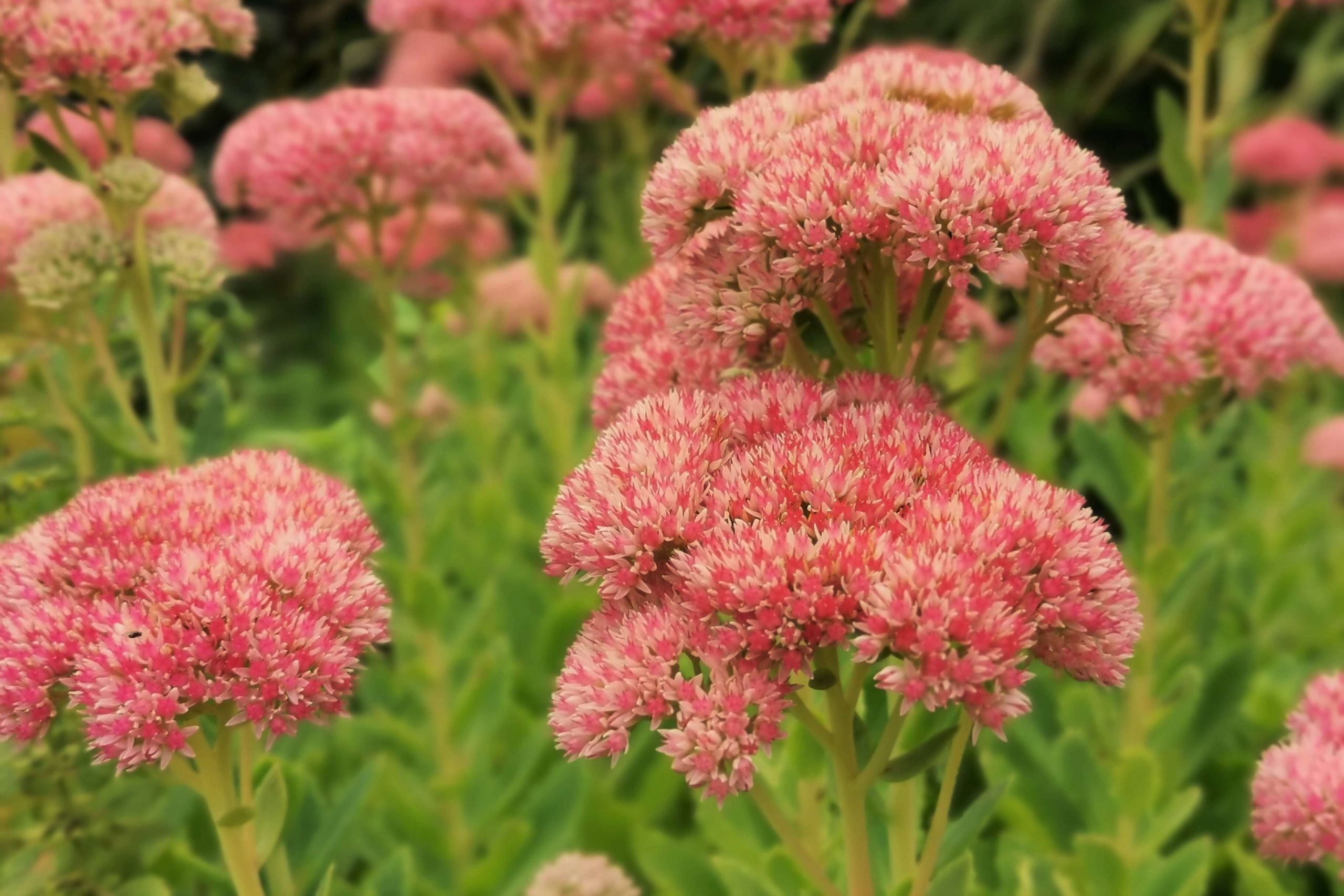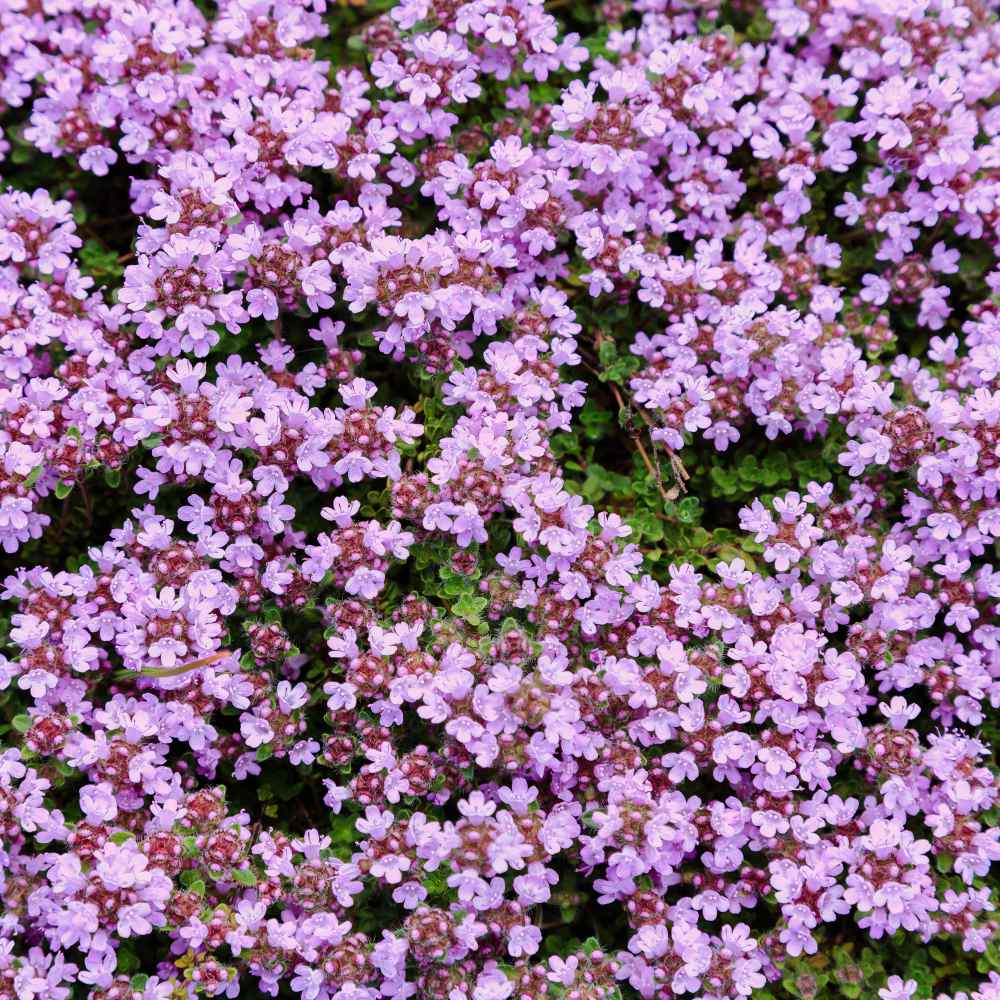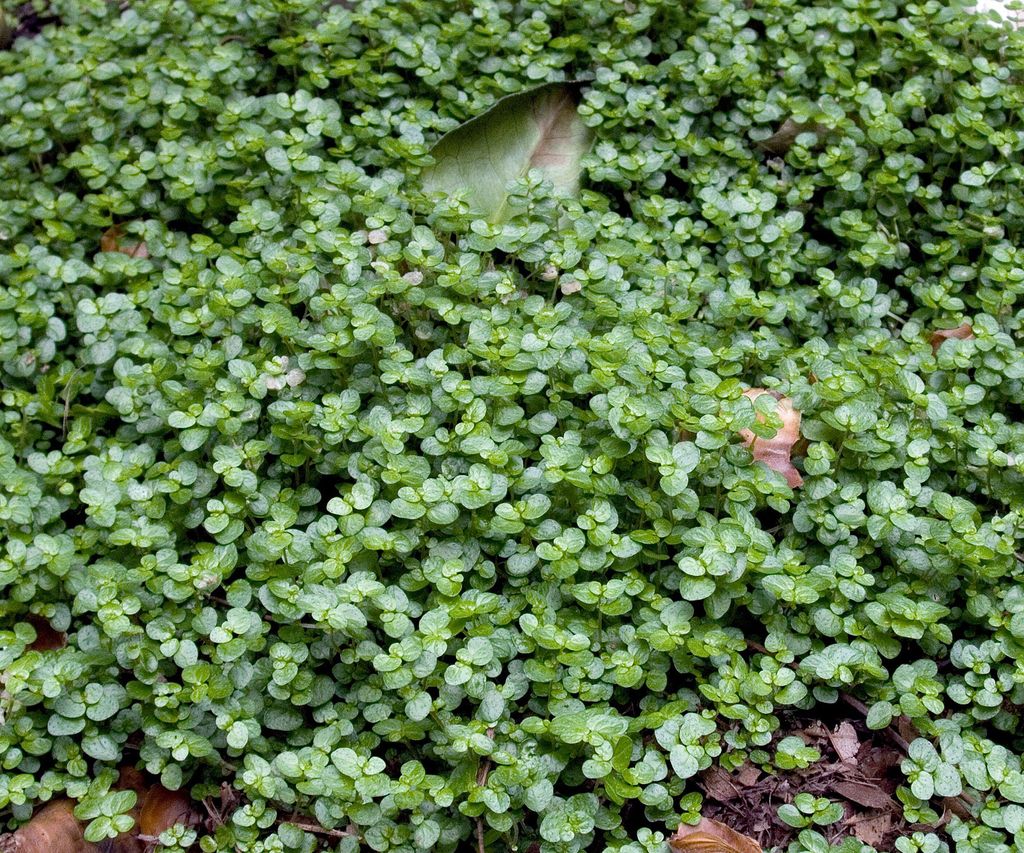Why Choose Ground Cover Flowers for Your Garden
Ground cover flowers are an excellent choice for gardeners looking to create a beautiful, low-maintenance landscape. These flowers, which cover the ground with their dense foliage and vibrant blooms, offer numerous benefits for gardeners of all skill levels. One of the primary advantages of ground cover flowers is their ability to suppress weeds, reducing the need for frequent weeding and mulching. This is especially useful for gardeners who want to minimize their environmental impact, as it reduces the need for herbicides and other chemicals.
In addition to their weed-suppressing abilities, ground cover flowers also help to reduce soil erosion. By covering the ground with a dense layer of foliage, these flowers prevent soil from being washed or blown away, reducing the risk of erosion and soil degradation. This is particularly important for gardeners who live in areas with heavy rainfall or strong winds.
Another benefit of ground cover flowers is their ability to create a beautiful, lush landscape with minimal maintenance. These flowers are often drought-tolerant and require less watering than other types of plants, making them an excellent choice for gardeners who want to conserve water. They also require less pruning and grooming, as they naturally spread and fill in gaps in the garden.
Ground cover flowers are also an excellent choice for gardeners who want to attract pollinators and other wildlife to their garden. Many types of ground cover flowers, such as creeping thyme and sedum, produce nectar-rich blooms that attract bees, butterflies, and other pollinators. This can help to support local ecosystems and promote biodiversity in the garden.
Overall, ground cover flowers are an excellent choice for gardeners who want to create a beautiful, low-maintenance landscape. With their ability to suppress weeds, reduce soil erosion, and attract pollinators, these flowers offer numerous benefits for gardeners of all skill levels. Whether you’re looking to create a lush, vibrant landscape or simply want to reduce your environmental impact, ground cover flowers are an excellent choice.
How to Select the Perfect Ground Cover Flowers for Your Climate
Selecting the right ground cover flowers for your specific climate and region is crucial for their success. Ground cover flowers that thrive in one region may not perform well in another, so it’s essential to choose varieties that are adapted to your local conditions. When selecting ground cover flowers, consider the amount of sunlight your garden receives, as well as the type of soil and moisture levels.
For gardens with full sun, consider ground cover flowers like sedum, delosperma, or creeping juniper. These plants are drought-tolerant and can thrive in areas with high temperatures and intense sunlight. For gardens with partial shade, consider ground cover flowers like vinca minor, pachysandra, or ajuga. These plants prefer well-draining soil and consistent moisture levels.
Soil type is also an essential factor to consider when selecting ground cover flowers. For gardens with heavy clay soil, consider ground cover flowers like creeping thyme or sweet woodruff. These plants prefer well-draining soil and can tolerate a range of moisture levels. For gardens with sandy soil, consider ground cover flowers like sedum or dymondia. These plants prefer dry to medium soil moisture and can thrive in areas with good drainage.
Moisture levels are also critical when selecting ground cover flowers. For gardens with high rainfall or irrigation, consider ground cover flowers like vinca minor or pachysandra. These plants prefer consistent moisture levels and can thrive in areas with high humidity. For gardens with low rainfall or drought, consider ground cover flowers like sedum or delosperma. These plants are drought-tolerant and can thrive in areas with low moisture levels.
By considering these factors, you can select the perfect ground cover flowers for your climate and region. Remember to choose varieties that are adapted to your local conditions, and don’t be afraid to experiment with different combinations of plants to find the perfect solution for your garden.
Some popular ground cover flowers that can thrive in a variety of climates include:
- Creeping thyme (Thymus serpyllum)
- Sedum (Sedum spp.)
- Vinca minor (Periwinkle)
- Phlox subulata (Creeping Phlox)
- Dymondia margaretae (Silver Carpet)
These plants are all relatively low-maintenance and can thrive in a range of conditions, making them ideal for gardens with varying climates and soil types.
Creeping Thyme: A Popular and Versatile Ground Cover Option
Creeping thyme (Thymus serpyllum) is a popular and versatile ground cover flower that is widely used in gardens and landscapes. This low-growing, spreading plant is perfect for covering large areas of ground, and its tiny, fragrant blooms make it a favorite among gardeners and bees alike.
One of the main benefits of creeping thyme is its ability to tolerate foot traffic. This makes it an ideal choice for areas of the garden that receive heavy use, such as pathways, patios, and play areas. Creeping thyme is also drought-tolerant and can thrive in areas with poor soil, making it a great option for gardeners who want a low-maintenance ground cover.
Creeping thyme is also a great choice for gardeners who want to attract pollinators to their garden. The plant’s tiny blooms are rich in nectar and are a favorite among bees, butterflies, and other pollinators. This makes creeping thyme a great addition to any garden that wants to support local wildlife.
In addition to its many benefits, creeping thyme is also a versatile plant that can be used in a variety of ways. It can be used as a ground cover, a border plant, or even as a container plant. Creeping thyme can also be used to create a beautiful, fragrant lawn alternative that requires less maintenance than traditional grass.
Some of the key characteristics of creeping thyme include:
- Low-growing, spreading habit
- Tiny, fragrant blooms in pink, purple, or white
- Drought-tolerant and can thrive in poor soil
- Can tolerate foot traffic and heavy use
- Attracts pollinators and supports local wildlife
Overall, creeping thyme is a popular and versatile ground cover flower that is perfect for gardeners who want a low-maintenance, fragrant, and attractive addition to their garden.
Other Low-Maintenance Ground Cover Flowers to Consider
In addition to creeping thyme, there are many other low-maintenance ground cover flowers that can add beauty and functionality to your garden. Some popular options include sedum, vinca minor, and phlox subulata.
Sedum is a succulent ground cover that is perfect for hot, dry areas of the garden. It comes in a variety of shapes and sizes, and its thick, fleshy leaves can store water, making it drought-tolerant. Sedum is also a great choice for gardeners who want to attract pollinators, as its blooms are rich in nectar and attract bees and butterflies.
Vinca minor, also known as periwinkle, is a fast-spreading ground cover that is perfect for areas with poor soil. It has blue-purple blooms in the spring and has a moderate growth rate, making it a great choice for gardeners who want a low-maintenance ground cover that can fill in quickly.
Phlox subulata, also known as creeping phlox, is a low-growing ground cover that is perfect for areas with full sun to partial shade. It has pink, purple, or white blooms in the spring and has a moderate growth rate, making it a great choice for gardeners who want a low-maintenance ground cover that can attract pollinators.
Other low-maintenance ground cover flowers to consider include:
- Dymondia margaretae (Silver Carpet)
- Delosperma (Ice Plant)
- Creeping Juniper (Juniperus horizontalis)
- Sweet Woodruff (Galium odoratum)
These ground cover flowers are all relatively low-maintenance and can thrive in a variety of conditions, making them perfect for gardeners who want to add beauty and functionality to their garden without a lot of fuss.
When choosing a low-maintenance ground cover flower, be sure to consider the specific growing conditions of your garden, including sunlight, soil type, and moisture levels. This will help you choose a ground cover that will thrive in your garden and require minimal maintenance.
How to Plant and Care for Ground Cover Flowers
Planting and caring for ground cover flowers is relatively easy, but it does require some basic knowledge and attention to detail. Here are some step-by-step instructions on how to plant and care for ground cover flowers:
Soil Preparation:
Before planting ground cover flowers, it’s essential to prepare the soil properly. This includes removing any debris, weeds, or existing plants, and loosening the soil to a depth of about 8-10 inches. You can also add organic matter such as compost or well-rotted manure to improve the soil’s fertility and drainage.
Planting:
Plant ground cover flowers in the spring or fall, when the weather is cooler. Space the plants about 6-12 inches apart, depending on the variety and growth habits. Water the plants thoroughly after planting, and keep the soil consistently moist during the first few weeks after planting.
Watering:
Ground cover flowers require regular watering, especially during the first few weeks after planting. Water the plants when the top inch of soil feels dry to the touch, and avoid overwatering, which can lead to root rot and other problems.
Fertilization:
Feed ground cover flowers with a balanced fertilizer in the spring, when new growth begins. You can also use a slow-release fertilizer to provide nutrients throughout the growing season.
Mulching:
Mulching around ground cover flowers can help retain moisture, suppress weeds, and regulate soil temperature. Use a thin layer of organic mulch such as wood chips or bark, and keep it a few inches away from the plant stems.
Some other tips to keep in mind when planting and caring for ground cover flowers include:
- Choose a location with the right amount of sunlight and soil type for the specific variety of ground cover flower.
- Use a soil test kit to determine the pH and nutrient levels of your soil, and adjust accordingly.
- Keep the area around the plants weed-free to prevent competition for water and nutrients.
- Divide and replant ground cover flowers every few years to maintain their health and vigor.
By following these steps and tips, you can enjoy a beautiful and thriving ground cover flower garden that requires minimal maintenance and care.
Design Ideas for Incorporating Ground Cover Flowers into Your Landscape
Ground cover flowers can be a beautiful and versatile addition to any landscape. Here are some design ideas and inspiration for incorporating ground cover flowers into your garden:
Border Plantings:
Use ground cover flowers as a border planting to add color and texture to your garden beds. Choose a variety of ground cover flowers that bloom at different times to create a dynamic display of color throughout the growing season.
Container Gardens:
Ground cover flowers can thrive in containers, making them a great option for small gardens or patios. Choose a container that is at least 6-8 inches deep to provide enough room for the roots of the plants to grow.
Lawn Alternatives:
Consider using ground cover flowers as a lawn alternative. This can be a great option for areas with poor soil or where traditional grass lawns are difficult to maintain. Choose a variety of ground cover flowers that can tolerate foot traffic and provide a lush, green carpet.
Rock Gardens:
Ground cover flowers can be a beautiful addition to rock gardens. Choose a variety of ground cover flowers that can thrive in well-draining soil and provide a splash of color among the rocks.
Some popular ground cover flowers for design ideas include:
- Creeping thyme (Thymus serpyllum)
- Sedum (Sedum spp.)
- Vinca minor (Periwinkle)
- Phlox subulata (Creeping Phlox)
- Dymondia margaretae (Silver Carpet)
When designing with ground cover flowers, consider the following tips:
- Choose a variety of ground cover flowers that bloom at different times to create a dynamic display of color throughout the growing season.
- Consider the mature size of the plants and leave enough space for them to grow.
- Use a mix of ground cover flowers with different textures and colors to create a visually interesting design.
- Don’t be afraid to experiment and try new combinations of ground cover flowers.
By incorporating ground cover flowers into your landscape design, you can create a beautiful and low-maintenance garden that requires minimal upkeep.
Common Problems and Solutions for Ground Cover Flowers
While ground cover flowers are generally low-maintenance and easy to care for, they can still be susceptible to certain problems. Here are some common issues that may arise when growing ground cover flowers, along with solutions and troubleshooting tips:
Pests:
Ground cover flowers can be vulnerable to pests such as aphids, whiteflies, and spider mites. To control these pests, use insecticidal soap or neem oil, and make sure to inspect your plants regularly for signs of infestation.
Diseases:
Ground cover flowers can be susceptible to diseases such as powdery mildew, leaf spot, and root rot. To prevent these diseases, make sure to provide good air circulation, water your plants properly, and avoid over-fertilizing.
Weeds:
Weeds can be a major problem when growing ground cover flowers, as they can compete with your plants for water and nutrients. To control weeds, use a pre-emergent herbicide or mulch around your plants to prevent weeds from germinating.
Other Common Problems:
Other common problems that may arise when growing ground cover flowers include:
- Overwatering: Make sure to water your plants properly, and avoid overwatering, which can lead to root rot and other problems.
- Underwatering: Make sure to water your plants regularly, and avoid underwatering, which can lead to drought stress and other problems.
- Lack of Light: Make sure to provide your plants with enough light, and avoid planting them in areas with too much shade.
- Soil Problems: Make sure to provide your plants with well-draining soil, and avoid planting them in areas with poor soil quality.
Solutions and Troubleshooting Tips:
If you encounter any of these problems, here are some solutions and troubleshooting tips:
- Prune your plants regularly to promote healthy growth and prevent disease.
- Use a balanced fertilizer to promote healthy growth and prevent nutrient deficiencies.
- Monitor your plants regularly for signs of pests and diseases, and take action promptly if you notice any problems.
- Provide your plants with enough water, but avoid overwatering, which can lead to root rot and other problems.
By following these tips and solutions, you can help prevent common problems and keep your ground cover flowers healthy and thriving.
Maintenance Tips for Keeping Your Ground Cover Flowers Thriving
To keep your ground cover flowers healthy and thriving, regular maintenance is necessary. Here are some tips to help you keep your ground cover flowers looking their best:
Pruning:
Pruning is an essential part of maintaining ground cover flowers. Prune your plants regularly to promote healthy growth, encourage blooming, and prevent overgrowth. Use pruning shears or clippers to trim back your plants, and make sure to remove any dead or damaged leaves or stems.
Deadheading:
Deadheading is the process of removing spent blooms from your plants. This helps to encourage more blooming and prevents seed production. Use scissors or clippers to remove spent blooms, and make sure to remove the entire flower stem to prevent seed production.
Dividing:
Dividing is the process of separating and replanting your ground cover flowers. This helps to promote healthy growth, prevent overgrowth, and encourage blooming. Use a garden fork or spade to gently separate the roots of your plants, and replant them in a new location.
Watering:
Watering is an essential part of maintaining ground cover flowers. Make sure to water your plants regularly, but avoid overwatering, which can lead to root rot and other problems. Use a drip irrigation system or soaker hose to deliver water directly to the roots of your plants.
Fertilizing:
Fertilizing is an essential part of maintaining ground cover flowers. Use a balanced fertilizer to promote healthy growth, encourage blooming, and prevent nutrient deficiencies. Apply fertilizer in the spring and summer months, and avoid fertilizing in the fall and winter months.
Pest and Disease Control:
Pest and disease control is an essential part of maintaining ground cover flowers. Use insecticidal soap or neem oil to control pests, and use fungicides to control diseases. Make sure to inspect your plants regularly for signs of pests or diseases, and take action promptly if you notice any problems.
Some other tips to keep in mind when maintaining your ground cover flowers include:
- Make sure to provide your plants with enough sunlight, water, and nutrients.
- Use a mulch or compost to retain moisture and suppress weeds.
- Monitor your plants regularly for signs of pests or diseases, and take action promptly if you notice any problems.
- Use a garden fork or spade to gently separate the roots of your plants when dividing.
By following these tips, you can help keep your ground cover flowers healthy and thriving, and enjoy a beautiful and low-maintenance landscape.





/pink-flower-thyme-6f9f18a1-295e3f7461c940e29cb3d5689c6ec228.jpg)

